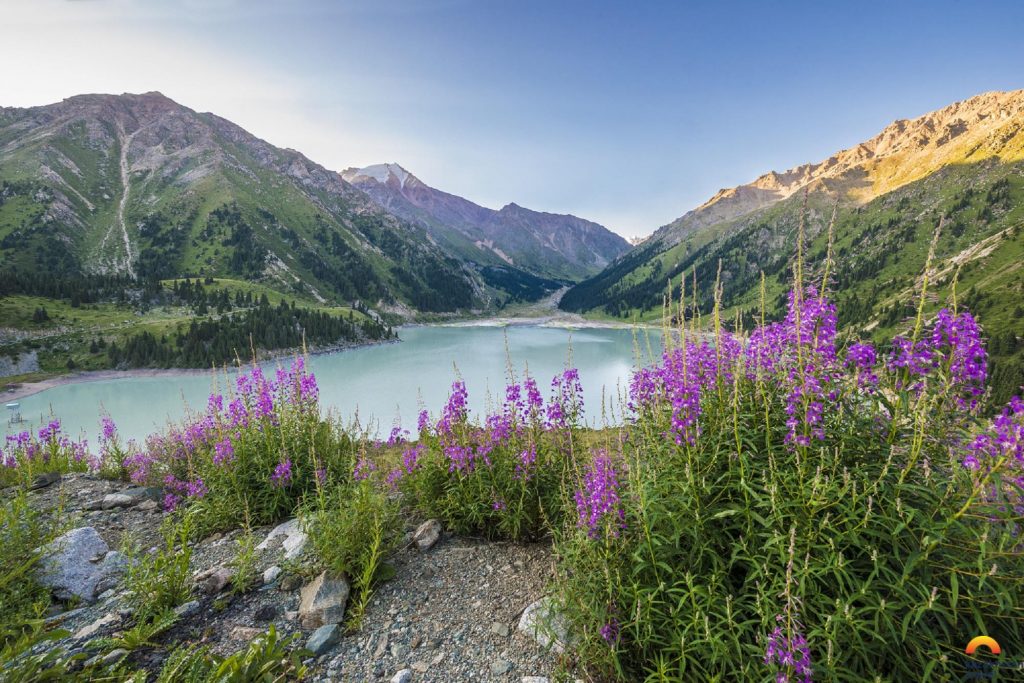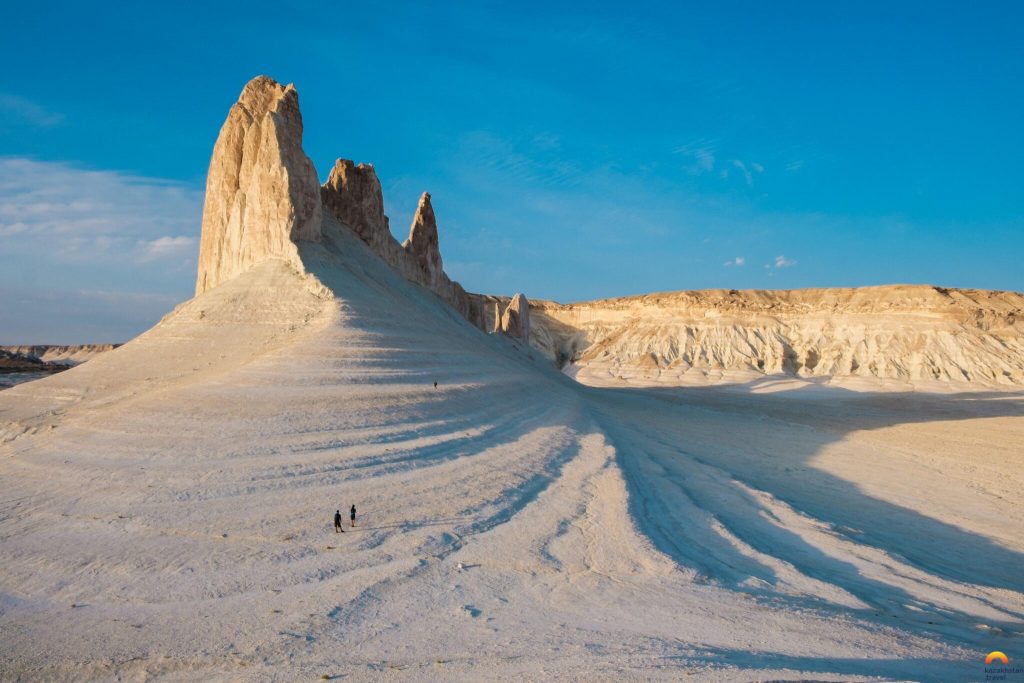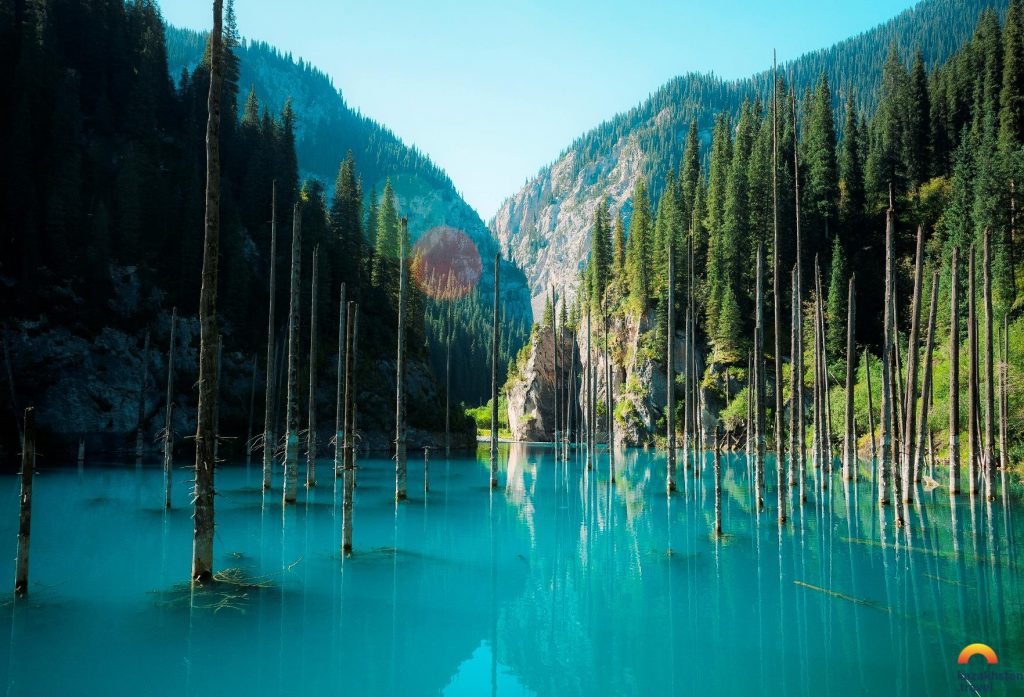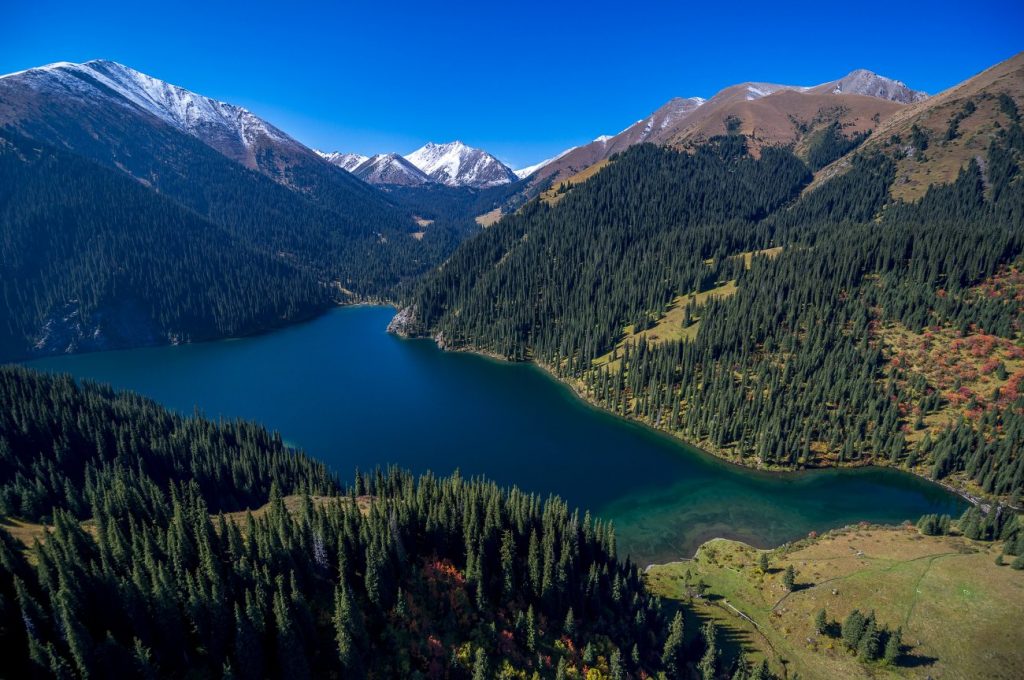
Big Almaty Lake is one of the most popular destinations near Almaty city. Photo credit: kazakhstan.travel
Tourism around the world continues to recover at a strong pace. Globally, there were almost three times as many international arrivals in the first quarter of 2022 as in the same period of 2021. Kazakhstan is no exception and is ready for foreign and local tourists.
The Astana Times spoke to Talgat Amanbayev, Chair of Kazakh Tourism national company tasked with promotion and improvement of tourism potential, about how the pandemic opened up new opportunities, and what comes next for the Kazakh tourism industry.
In the first four months of this year alone, the industry attracted 75.6 billion tenge (US$173.7 million), whereas the target for 2022 is 1 trillion tenge (US$2.3 billion).
The COVID-19 pandemic was a significant stress test for tourism. How did it affect the country’s tourism industry?
That’s a very tough question. Since the start of the pandemic, people have been trying to forecast what would be the effect. In the first year, which hit the hardest, the country lost 70 percent of inbound traffic and 40 percent of domestic flows. And according to various estimates, the calculated loss was around 300 billion tenge (US$685.9 million). At the same time, for example, last year a record figure for domestic tourism was recorded – 6.5 million, almost 7 million – traveled around the country. This is the record high. Thanks to this, the tourism businesses began to recover. What I like to point out about tourism, it is the field of the economy that was hit hardest but it is one of the fastest recovering ones. For example, hotels and accommodations last year earned 109 billion tenge (US$249.2 million), which is very close to the pre-pandemic period. So it’s recovering very fast and like I said traveling is a lot safer now – less hassle and less paperwork.
You said the tourism industry is recovering. When do you estimate it will rebound to pre-pandemic levels?
Domestic tourism already reached the pre-pandemic levels, but also broke the highest ever record. Domestic tourism flows have always been in high demand, especially in the summer. Kazakhstan has several resort areas that receive a lot of tourists, with the maximum during the summer. The Burabai and Alakol lakes, the Caspian Sea, Bayanauyl, Kapshagai, Bukhtarma and in recent years Imantau Shalkar. They all have great potential and they are often found on wish lists to travel in summer. The pandemic boosted the development of ecotourism. Although it was growing annually, with the pandemic, this became a trend. Last year, we had a record 1.5 million visits to national parks, before, the record was around 900,000. So it’s almost 50 percent more than the previous record. If previously, it was interesting only to foreigners, now we see a lot of Kazakh citizens traveling to national parks and doing ecotourism. Caravanning and agritourism are also developing. I would like to note that domestic tourism has been growing before the pandemic as well. But the pandemic just boosted the rate. So if it was a 12-13 percent growth rate, now it’s close to 50 percent.
For inbound tourism, we are also seeing positive change. In February, Kazakhstan resumed its visa-free regime with 74 countries. And we are hoping to increase the list to 100 countries. We see the jump in international arrivals but it has to do with the geopolitical situation in Russia and Ukraine as well. We see an increase from that region. But besides that, the visa-free regime restoration, and removal of the mask regime is making Kazakhstan a more attractive and much safer destination to travel to. Because of the current situation, a lot of people who were planning to visit Russia, Ukraine, or Belarus this year, are now rethinking and choosing Kazakhstan over these destinations to travel to. I do not want to call it the added benefit, but rather a side effect, which works positively for the development of tourism in Kazakhstan.

Bozjyra is a famous sight in Kazakhstan, with a Marsian-like landscape, created because of weathering and erosion, and located on the territory of the Ustyurt Plateau in the Mangistau Region. Photo credit kazakhstan.travel
What are some of the ways to sustain the growing interest of people to travel within their own country?
Kazakh Tourism was created specifically to promote domestic tourism and inbound tourism. One of the things that people notice about our work is the promotional efforts that we do. This is mostly our videos, and everybody knows we work with local travel bloggers and foreign influencers, and we encourage them to travel around the country. These are not traditional marketing videos, they are more like social media content, be it Instagram stories, Tik Tok videos, and YouTube shorts. One of the examples is Pankratova skiing on a lake during the winter [referring to Kazakh figure skater Kseniya Pankratova’s dance performance on the frozen Lake Kolsai]. Such videos are becoming very popular, people are sharing them. We also agreed to play our promotional videos in all public service centers which serve tens of thousands of people every day. Because of the waiting line, a lot of people are paying attention to these videos. But you can’t lure people with just commercials.
And this is another part of our work, which is less seen but is more systematic. In January, we came up with measures such as subsidizing tour operators for every foreign tourist that they bring. We are also reimbursing 25 percent of the cost of equipment and machinery for ski resorts, which is very expensive infrastructure, 10 percent of the costs of the construction and reconstruction of tourism facilities, 25 percent of the cost of tourism transport, and 10 percent of the construction of roadside service facilities. Another example is the Kids Go Free project, where every kid up to 18 years of age is eligible for a free ticket as part of a tour package.
What are the measures to improve the infrastructure? Don’t spectacular sights in Kazakhstan sometimes lack essential infrastructure?
Our country is the ninth largest country in the world, so it is very hard to show instant results. Building roads in Kazakhstan is a whole new story because of the distances to cover with roads, but also the need for facilities by the road. The work is underway. For example, if you are living in West Kazakhstan or Mangistau regions, in the past two years you will see that hundreds of kilometers of roads have been built around the popular tourist places, which allowed local businesses to prosper. The same is happening in the Almaty region and the Turkistan Region. This year, we will be building the same in the three new regions. A lot of the airports have also been reconstructed.
To be honest, sometimes there are some locations, which are great and awesome, but only a few people like them. So for the government to prioritize this location to put effort into it, it has to be in high demand. So unless it has a high demand, there are many other things that should be taken care of in the country.
Besides ecotourism, what are some other areas that may be in big demand among tourists?

Lake Kaiyndy with turquoise waters was created because of a major earthquake in 1911 in the Almaty Region and has trees that grow upside down and underwater. Photo credit: kazakhstan.travel
COVID, in general, brought a lot of trouble but also created a lot of opportunities for new types of businesses and for old businesses to reshape. In ecotourism, because of the high demand, we see a lot of investors putting their money into ecotourism, building glamping, and accommodations, with different types of activities.
We also see agritourism becoming popular. Generally, you are going to a rural area, for example, a farm, and there you experience nature, lifestyle, and contact with domestic animals. Because Kazakhstan is very popular for its agriculture, in different parts, we have different types of agribusinesses. They are all attracting tourists.
Adventure tourism is expanding and event-based tourism is getting back on track with a lot of people redefining the events from major big events to smaller ones. It is interesting to notice all these changes and to see how businesses are adapting.
People’s attitude toward nature is not always sustainable. What are some of the ways to balance tourism industry development and sustainability?
This is why we decided to do research on what other countries are doing to tackle this issue. And I really liked the approach of the Chinese government, because they have a large number of tourists, they say whenever tourists or people are wandering around by themselves, there is always going to be damage. They see the only way to resolve this issue is to organize this flow by building a pathway so that people are organized along this way. It will be easier to maintain their safety in the first place and to clean up after them.

Kolsai Lakes are located some 300 kilometers from Almaty.
Another question is whether the government should be the one doing it? Not always. Mostly, businesses should be motivated to do this. And I noticed this happening in Sati village in the Almaty Region [near Lake Kolsai]. Initially, it was just a few households hosting tourists for the summer, but because of the pandemic, a lot of people went out to Sati to travel. And suddenly, instead of 30 households, now it is 180 households renting their houses. And then what I noticed is that they started organizing themselves on social media. Whenever there is a group of tourists approaching, you have to contact one person who will provide accommodation for everyone in the group. This is not new. It’s called community-based tourism. In community-based tourism, they are the ones who are the most interested in keeping the environment clean. And what I noticed in Sati is that these locals are now protecting their area, putting up signs, teaching their kids not to throw garbage, and punishing those who litter around. It is all happening without the government interfering. And I think we need to just follow this example. If the locals are not interested in it, the government would have to spend millions of tenge to clean up after everyone.







